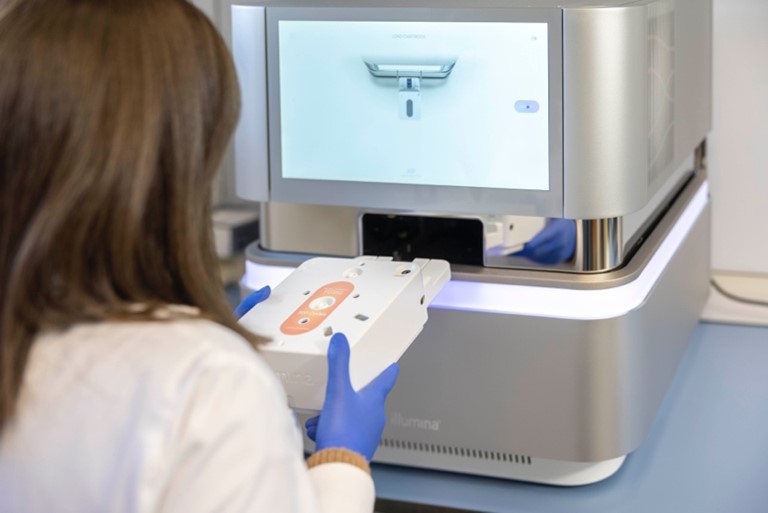Translational Genomics

MiSeq® Personal Sequencer (Illumina)
This is a massive sequencing system that can generate up to 20 GB of data per run, 20M reads from 2x300 bp in a maximum of 384 indexed samples. This system uses sequencing by synthesis technology (SBS) and performs amplification, sequencing and analysis of data, all in one instrument, using the RTA (Real Time Analysis) v1.18.54.0 software, MCS (MiSeq Control Software) v2.6.1.1, MSR (MiSeq Reporter) 2.6.2.3 and cloud data storage (BaseSpace).

ABI Prism 3130/3130xl Genetic Analyzers (Applied Biosystems)
Sequencers with 4-16 capillaries for 96-well or 383-well plates, CCD detection camera and multiline argon ion laser with primary excitation at 488 nm and 514.5 nm. Software acquisition Data Collection v3.1 and analysis programmes Sequencing Analysis v5.4, GeneMapper v4.1 and SeqScape 2.7.

2200 TapeStation® (Agilent)
This automated electrophoresis system analyses nucleic acids (gDNA, DNA or RNA fragments or libraries) or proteins in a capillary support (ScreenTape) and acquires images. It allows to calculate the size of nucleic acids (bp) and proteins (kDa), to perform quantitative/qualitative analysis using the GeneTools software with an embedded system for the comparison of simplified bands. This system uses a very small sample volume (1-2 µL) and readings can be performed in single tubes or 96-well plates.

Real time qPCR LightCycler®480 (Roche Diagnostics)
This system supports both 96-well and 384-well plate formats. It is fitted with a xenon lamp, emissions at 430-630 nm, filters with excitation wavelengths at 440, 465, 498, 533 and 618 nm, and emission wavelengths at 488, 510, 580, 610, 640 and 660 nm, which allows the detection of the most common fluorochromes (FAM, NED, ROX, SYBR, TAMRA i VIC). LightCycler® 480 programme for acquisition and analysis and LightCycler® Probe Design Software 2.0. 1.

NextSeq™-1000
This massive sequencing system is able to generate up to 120 GB of data per run and 400M reads in runs of 2x150 cycles. This system uses Illumina's sequencing by synthesis technology (SBS) and can analyse results locally, remotely and with the secondary analysis system DRAGEN bi o-IT FPGA.

MINion System (Oxford Nanopore)
This massive sequencing system is based on the use of nanopores embedded within a membrane, which allows nucleic acids (DNA and RNA) to pass through. Bases are identified based on changes in the electric current passing through the membrane. Ultra-long reads are generated (> 4 MB) and up to 50 GB of data in 72-hour runs at 420 bases per second. Suitable for whole genomes/exomes/metagenomics, direct sequencing, whole transcriptome (cDNA), small transcriptome (direct DNA) and methylation studies.

Robotic EpMotion 5070 Station
The robotic EpMotion 5070 station is a system for dispensing liquids. It has two tools of one and eight channels each that dispense volumes of 1-50 µL. It can pipette volumes of 1-2 µL with or without contact. It has a precision of less than 2% cv at 1 µL. It has an optical sensor to detect and automatically calculate the volume of liquid, labware and tips. It is compatible with tubes (0,2 mL to 50 mL) and up to 384-well microplates.

